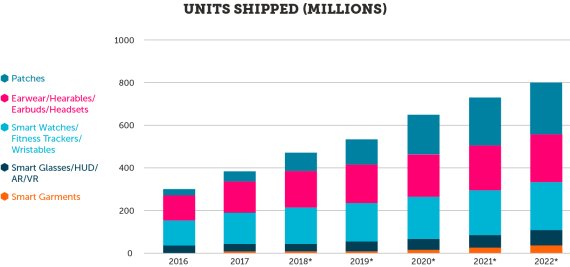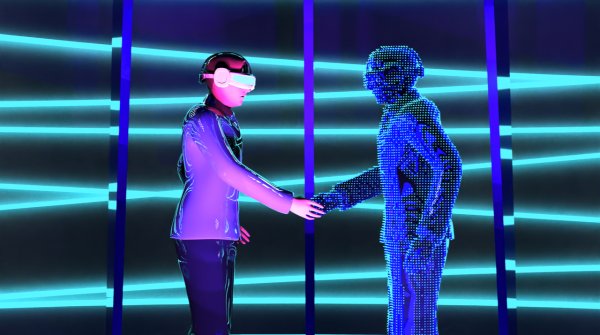
Wearable Technologies can be defined as connected electronics and technologies which are worn close to, on, or even inside the body. The market for Wearable Technologies has gone through multiple cycles of hypergrowth but will mature to a more predictable and consistent growth pattern. There are numerous types of devices with a multitude of applications and many of them are now hitting the consumer mass-market.
Wearable Technologies can provide highly beneficial use cases such as monitoring and improving athlete’s performance as well as health. Retailers are also given new ways to interact with consumers. For business development purposes it is critical to identify the right collaboration partners from different industries in order to drive digitalization. However, digitalization is not exclusively related to wearable technology components, but should rather be a key element of every digital brand strategy.
How to find the right partner for this important step? Join the upcoming WT | Wearable Technologies Conference at ISPO Munich 2019 taking place in the brand-new innovation hall C6 on February 5-6. Drive your business development and get latest insights in applications and digitalization strategies via IoT and wearable solutions.
- 550 million Wearables will be sold p.a. across all industry sectors with rising numbers in the coming years
- Smart Patches will make up to 30 % of the overall wearable market.
- In 2017 more than 140 million Smartwatches and Fitness Trackers were sold world-wide
- The market continues to grow with + 15 % CAGR
- Only a small percentage of devices are hitting the classical sports retail market.
Notably most of those devices should be sold via well trained sales people in order to leverage the opportunity for upselling, cross selling as well as entering into a repetitive sales cycle (aftersales). This opportunity has not been fully recognized by many retailers in the industry with the exception of some fast moving and forward-thinking organizations within the sporting goods industry.

Collaboration is a critical element in any digitalization process but should not be underestimated in the context of Wearable Technologies applications and product solutions. As such collaboration should be fully embedded in the entire value chain planning process.
WT products need to be developed with an ‘identity’ in mind that goes beyond a simple set of data. This ‘identity’ or to apply a slightly different term ‘personality’ will evolve from individualization and optimization of each user’s habits and preferred activities. A clear understanding of your company’s target group will create a holistic product by translating customer knowledge into a variety of applications. Applying WT products in such a manner will unearth a unique set of unexpected data enriching the customers with information they previously have never had access to.
For WT products you need more than just a well branded device and the related app. You need to partner / collaborate with a set of specialized companies like cloud analytics provider such as IBM Watson, Microsoft Azure, Google Cloud or Alibaba Cloud and with some network carriers which enable your device / application with connectivity or the dedicated private cloud environment (e.g. Telefonica, Vodafone, Telstra, …).
For a sports brand it could even be beneficial to analyze the market in search of a partnership with a healthcare provider, a biotech company or a traditional medtech company in order to accelerate time to market, create a bigger ecosystem and subsequently gain access to the so called “Healthstyle” (first used by ISPO group in 2011) market.
Looking more closely into POS, it is very important to analyze and recognize all potential benefits along the value chain related to WT products.
In a first step, a WT product could be an enabler for profitable aftersales business, for instance a customer could consult the retailer for new accessories or assistance with a new firmware update or any other type of maintenance service. Historically those opportunities have only been available for sporting goods retailers in the skiing or cycling categories. However, establishing an idea such as a WT service station with one or two well-trained employees could now create an USP for a future concept store/department for any sporting goods retailer. Furthermore, such a service could even be sold to customers, who had purchased the product through other retail channels.
Another angle of applying a more holistic approach to the overall sporting goods market could be to assess service and aftersales opportunities deriving from ‘low-tech WT solutions’. A straightforward integration of low power radio frequency into any kind of sports equipment could significantly enhance customer relations, loyalty programs, warranty and recycling processes as well as other types of POS services.
The WT | Wearable Technologies Conference at ISPO Munich 2019 is taking place in the brand-new innovation hall C6 on February 5-6. Drive your business development and get latest insights in applications and digitalization strategies via IoT and wearable solutions.
More information and tickets: https://www.wearable-technologies.eu
Christian Stammel is CEO at WT | Wearable Technologies, a leading innovation and business development platform for wearables, and updating ISPO.com readers about latest trends on digitalization, wearable tech and IoT in sports, fitness and well-being. More information about WT at www.wearable-technologies.comhttp://www.wearable-technologies.com
 SportsTechUnlocking the Future of Sports with AI
SportsTechUnlocking the Future of Sports with AI
- ISPO awards
- Mountain sports
- Bike
- Design
- Retail
- Fitness
- Health
- ISPO Job Market
- ISPO Munich
- ISPO Shanghai
- Running
- Brands
- Sustainability
- Olympia
- OutDoor
- Promotion
- Sports Business
- ISPO Textrends
- Triathlon
- Water sports
- Winter sports
- eSports
- SportsTech
- OutDoor by ISPO
- Heroes
- Transformation
- Sport Fashion
- Urban Culture
- Challenges of a CEO
- Trade fairs
- Sports
- Find the Balance
- Product reviews
- Newsletter Exclusive Area
- Magazine


